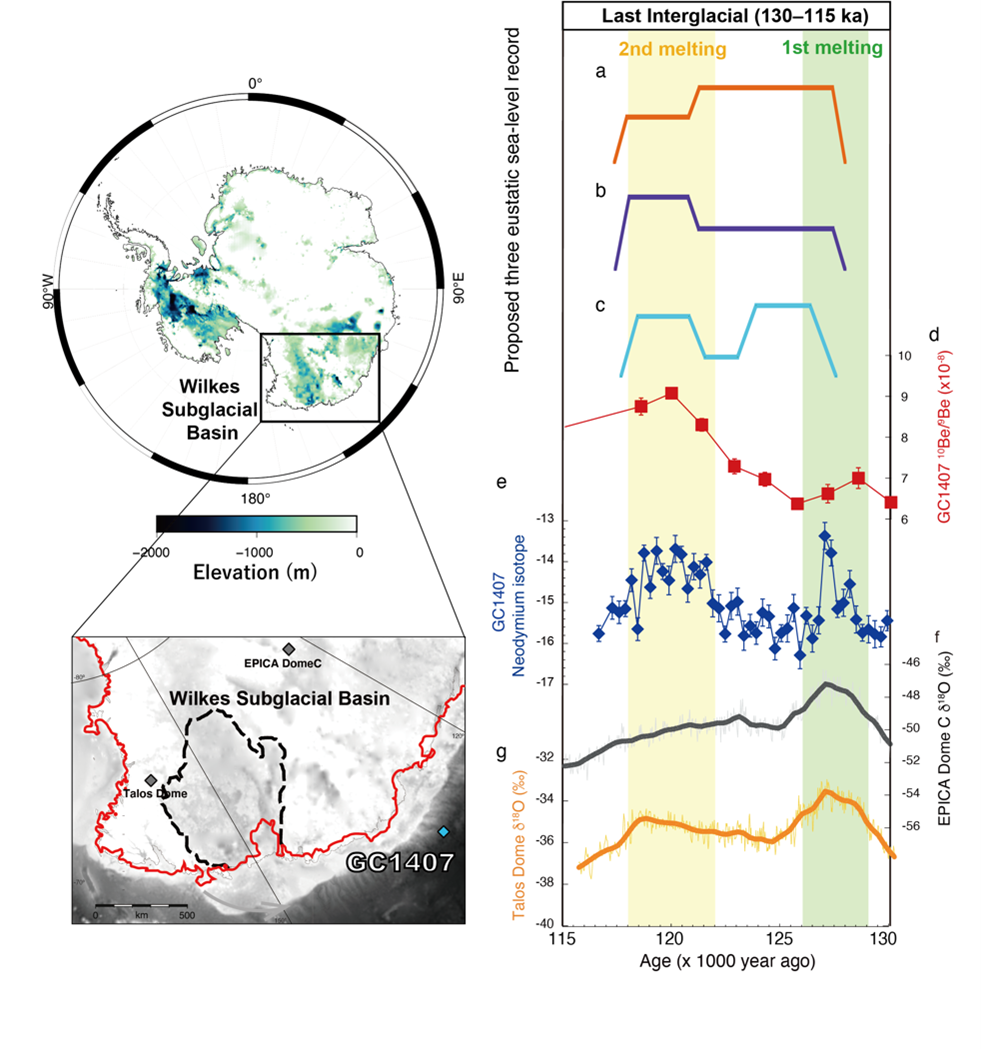East Antarctic Ice Sheet melted under a past global warming climate –A warning sign of significant sea level rise in near future global warming–
Summary
The Last Interglacial period (130,000–115,000 years ago) is characterized by warmer global mean temperatures and higher and more variable sea levels than the Holocene (11,700–0 years ago). Therefore, a better understanding of Antarctic ice-sheet dynamics during this interval would provide valuable insights for projecting sea-level change in future warming scenarios. Dr. Osamu Seki and his graduate student at Hokkaido University, together with a collaborative research team from University of Toyama (Prof. Keiji Horikawa) and six other institutes/universities, have analyzed a marine sediment core (named GC1407) collected off the Wilks Subglacial Basin in East Antarctica to investigate the stability of the East Antarctic ice-sheet during 130,000–115,000 years ago (Left figure). By measuring neodymium isotopes and Be isotopes in the marine sediments, we found that the significant melting of the East Antarctic Ice Sheet occurred twice during the Last Interglacial period (Right figure d and e). The ice sheet melting was estimated to have been large enough to raise sea level by about 0.8 m. Thus, our findings indicate that if global warming continues, not only the West Antarctic Ice Sheet but also a part of the East Antarctic Ice Sheet may melt, causing a larger sea level rise than currently thought.
Graphical abstract

Original article information
Journal
Nature Communications 14, 2129 (2023)
Title
Multiple episodes of ice loss from the Wilkes Subglacial Basin during the Last Interglacial.
Authors
Mutsumi Iizuka, Osamu Seki, David, J. Wilson, Yusuke Suganuma, Keiji Horikawa, Tina van de Flierdt, Minoru Ikehara, Takuya Itaki, Tomohisa Irino, Masanobu Yamamoto, Motohiro Hirabayashi, Hiroyuki Matsuzaki, and Saiko Sugisaki
DOI
https://doi.org/10.1038/s41467-023-37325-y

